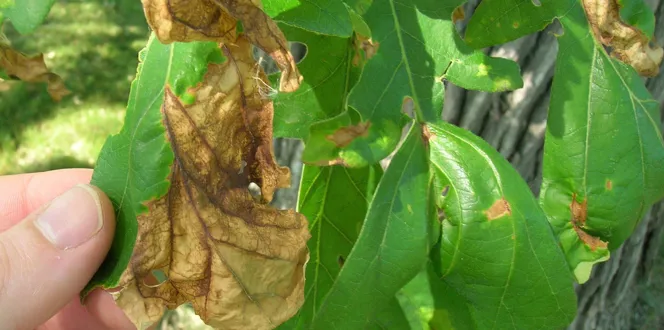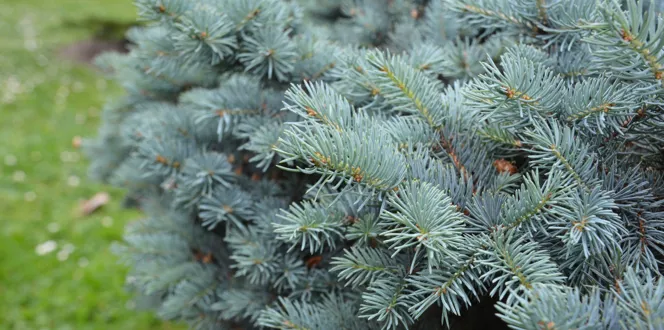Trees are pillars of strength and beauty in our landscapes, providing shade, oxygen, and wildlife habitats.
But beneath tree canopies lies a dynamic interplay between tree-damaging pests and beneficial insects. Some bugs are considered good, while others are not so great for our trees. Understanding this balance is essential for fostering healthy trees.
Let’s explore the world of tree pests versus beneficial insects.
What Defines a Tree Pest?
Tree pests are insects that get their nourishment from feeding on your trees. These insects typically fall into three categories:
- Leaf chewers, otherwise known as defoliators.
- Sap feeders that feed on tree sap.
- Wood-boring insects that bore into tree wood and feed on its internal tissue.
The Worst Pests For Trees
Of the three key tree pest categories, you might be wondering if one is worse for trees than the others.
While labeling one of these pest categories as the worst can depend on the tree, the climate and the level of infestation, wood-boring insects are usually the most severely impactful on tree health.
Leaf chewers and sap feeders both want to target the spoils the tree produces, which are the chlorophyll-rich leaves and nutrient-rich sugars that come about from photosynthesis. And by doing this, they can limit the tree’s vigor and ability to produce more sugars. Defoliation from leaf chewing insects is pretty noticeable, while sap feeder damage can be less immediately apparent.
But wood-boring insects must penetrate the tough outer bark to get inside the tree. Once inside, they can work to destroy that tree’s vascular system and limit its ability to move water and nutrients where they need to go. That can result in more severe symptoms, such as branch dieback, slow health decline, and ultimately death of the tree.
Types of Leaf Chewers
Leaf-chewing insects can defoliate trees, impacting individual branches. If present in large numbers, they can skeletonize and strip enough leaves from branches to weaken the tree’s ability to photosynthesize and produce energy. Severe defoliation stresses trees, making them more susceptible to other pests and diseases.
These insects – mainly caterpillars – can also sometimes create conspicuous webs or tents for protection that you can see in trees.
Some common leaf-chewers include the Eastern tent caterpillar, spongy moth caterpillar, fall webworm, sawfly, and Japanese beetle.
Effective management strategies usually involve a combination of cultural practices and targeted insecticide applications tailored to the specific pest and tree species.
Sap Feeders
Sap-feeding tree pests are some of the more common ones found in home landscapes.
These very small tree pests have specialized mouthparts that allow them to pierce plant tissues and extract sap, which is the nutrient-rich fluid circulating within the tree’s vascular system.
Two common groups of sap feeders are aphids and scales.
Aphids are small, soft-bodied insects that can usually be found on the undersides of leaves. As they feed, aphids excrete a sticky substance known as honeydew, which can accumulate on leaves, stems, and even outdoor furniture. This honeydew can then serve as a substrate for the growth of black sooty mold fungus.
Scales are small, oval-shaped tree pests that often resemble tiny bumps or shells attached to leaf and stem surfaces. Like aphids, these insects feed on sap by inserting their mouthparts into the plant tissues to extract nutrients. But, unlike aphids, they are often protected by a waxy or shell-like covering, which can make them tougher to control. They can weaken trees over time, causing stunted growth, yellowing foliage, and premature leaf drop.
Types of Wood Borers
Wood-boring insects can pose a serious threat to the health and survival of your trees. As they tunnel into the inner bark and wood of your tree, disrupting its vascular system and thus translocation of water and nutrients. They can also weaken its overall branch structure.
Some examples of wood-boring insects include the emerald ash borer (EAB), southern pine bark beetle, and western bark beetles.
The EAB is an invasive pest native to Asia that has wreaked havoc on ash trees across North America since the early 2000s. They lay eggs on the bark of ash trees, and once those eggs hatch, the larvae bore into the tree and feed on the inner bark and phloem tissue. This feeding disrupts the flow of water and nutrients through the tree, leading to canopy dieback and tree death. You might see D-shaped exit holes in the tree bark as a sign of EAB.
Controlling EAB requires properly timed, professional insecticide treatments such as trunk injections by a certified arborist.
While the EAB will attack both weak and healthy trees, the southern pine bark beetle usually attacks stressed trees by tunneling into their inner bark and creating galleries where they lay eggs and larvae feed on phloem tissue. Infected trees may release boring dust from their bark that a certified arborist will spot when identifying the tree pest infestation. This pest can lead to tree decline and even death.
Maintaining tree health, removing infested trees to prevent southern pine bark beetle spread, and applying preventive insecticide treatments to high-value trees are methods of control for this pest.
Western bark beetles include those like the mountain pine beetle, which attacks a range of coniferous tree species, tunneling into inner bark and phloem tissue and disrupting the flow of water and nutrients like the other bark beetles. You may see different populations and outbreaks of these pests based on climate change, drought, and forest management practices.
The Importance of Tree Diversity
Tree diversity plays a crucial role in combating tree pests and promoting tree health.
By planting a variety of tree species within a landscape or forest ecosystem, property owners can create a more resilient environment that is less susceptible to pest outbreaks. A diverse tree canopy would not suffer as big of a loss if one tree pest or disease came through and negatively impacted a single tree species.
Beneficial Insects
Beneficial insects can play a vital role in maintaining the health and balance of tree ecosystems by preying on or parasitizing harmful insects, pollinating flowers, decomposing organic matter, and contributing to nutrient cycling.
These natural enemies help control pest populations, reduce the need for pesticides, and promote overall ecosystem resilience.
Some examples of these include ladybugs and other predatory insects, parasitic wasps, and pollinators. Some will consume pest insects at various life stages to keep populations in check, while others will lay their eggs inside or on the bodies of other insects where their larvae develop and eventually kill the hosts. Pollinators play a crucial role in tree health by transferring pollen between flowers, facilitating fertilization and fruit development.
For example, Aphidoletes – midges similar in size to mosquitoes – can help control pests like aphids. Aphidoletes are attracted to the honeydew aphids produce. They’ll lay their eggs on the honeydew and then, after hatching, voraciously feed on aphids.
Achieving the right balance between bad tree pests and beneficial insects is essential for maintaining tree health, ecosystem resilience, and sustainable pest management practices. While it may seem counterintuitive, the goal is not to completely eradicate pests but rather to keep their populations below damaging levels while supporting populations of beneficial insects that help control them.





